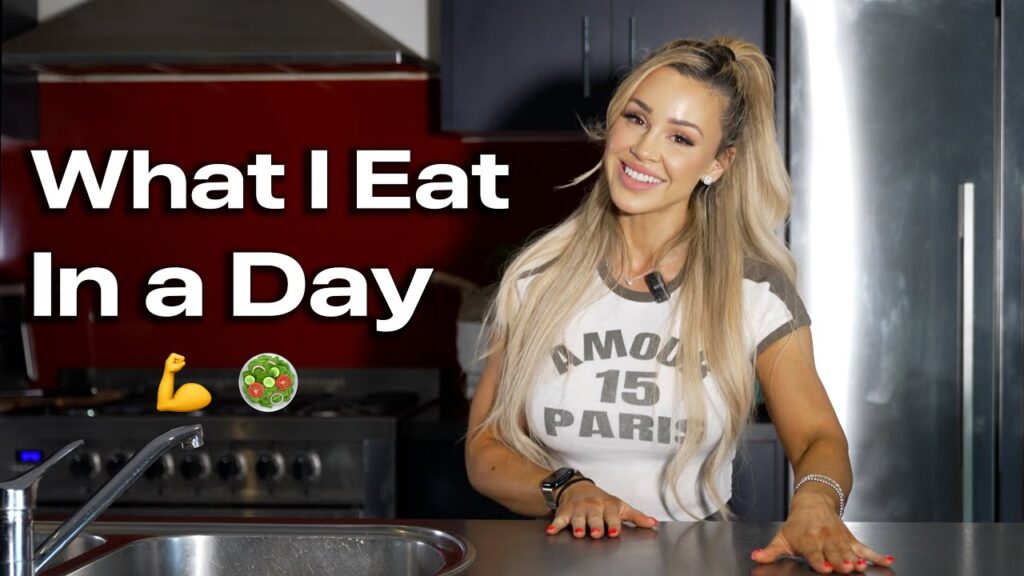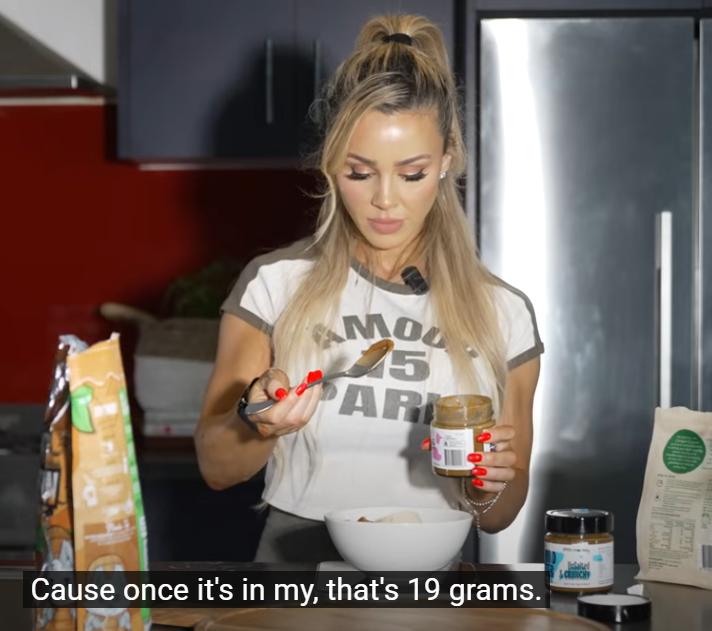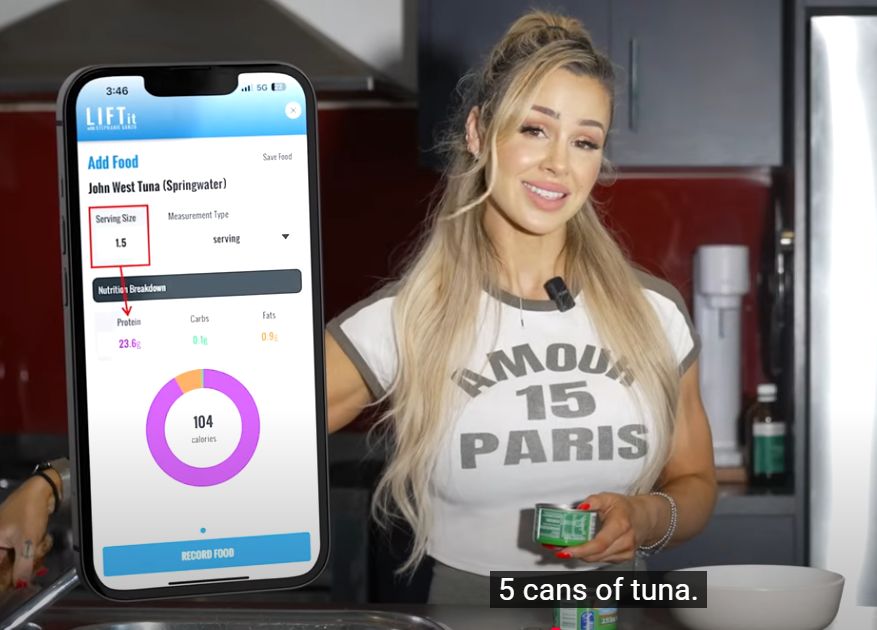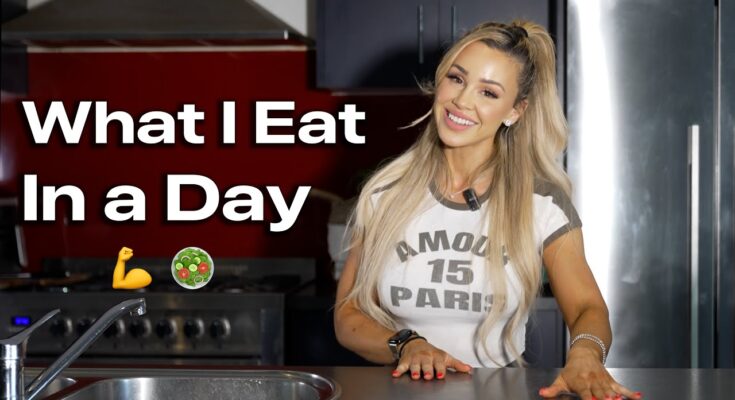When it comes to fueling performance, building muscle, and maintaining a lean physique, few do it better than Stephanie Sanzo. Known for her powerful strength training routines and no-nonsense approach to fitness, Stephanie isn’t just an inspiration in the gym—her nutrition strategy is equally calculated, especially when it comes to carb cycling.
In this blog, we’ll walk you through a sample “What I Eat in a Day” breakdown inspired by Stephanie Sanzo’s principles, with a deep dive into carb cycling—why it works, how it supports strength goals, and what a full day of meals might look like.
What is Carb Cycling?
Before diving into the meals, it’s important to understand carb cycling. Carb cycling is a nutrition strategy where you alternate your carbohydrate intake throughout the week—higher carb days are typically aligned with intense training sessions, while lower carb days are reserved for rest or lighter workouts.
The idea is to strategically time your carbs to fuel performance and muscle recovery while minimizing fat storage on non-training days. This method works well for athletes, bodybuilders, and anyone following a structured training program—especially someone like Stephanie Sanzo, who prioritizes strength and physique in her training.

Stephanie Sanzo’s Approach to Nutrition
Stephanie’s diet is built around performance and sustainability. She emphasizes nutrient-dense foods, enough protein to support recovery and muscle growth, and clean carbohydrates to fuel her heavy lifts. Carb cycling allows her to stay lean year-round while still pushing hard in the gym.
While the exact foods Stephanie eats may vary based on her training block, macro targets, and goals, the following breakdown offers a typical day on a high-carb training day vs. a low-carb rest day, inspired by her style.
High-Carb Day – Leg Day (Heavy Lifting)
On a high-carb day, carbs are used to power through intense sessions and aid in recovery. This is typically on a day when Stephanie is training glutes, hamstrings, or performing compound lifts like deadlifts and squats.
Meal 1 – Pre-Workout Fuel (7:00 AM)
Oats with Protein + Banana + Nut Butter
- Rolled oats (50g)
- Whey protein (1 scoop, mixed in)
- 1 banana
- 1 tbsp almond butter
- Cinnamon sprinkle
This meal is the perfect balance of complex carbs, a quick-digesting fruit, and healthy fats. The protein supports muscle repair, while the carbs top up glycogen stores for the workout ahead.

Meal 2 – Post-Workout Recovery (9:30 AM)
Grilled Chicken + White Rice + Mixed Veggies
- 150g grilled chicken breast
- 1 cup white rice
- Steamed broccoli and carrots
- Olive oil drizzle (1 tsp)
Post-workout, Stephanie prioritizes lean protein and fast-digesting carbs to maximize recovery. White rice is easy on the stomach and quickly replenishes glycogen, while the veggies and fats support overall health.
Meal 3 – Midday Refuel (12:30 PM)
Turkey Wrap + Sweet Potato Fries
- Whole grain wrap
- 120g sliced turkey breast
- Mixed greens
- Tomato slices
- Avocado spread
- Homemade baked sweet potato fries
This balanced lunch keeps energy levels stable and adds more complex carbs from both the wrap and sweet potato. The avocado adds healthy fats and flavor.

Meal 4 – Afternoon Snack (3:30 PM)
Protein Smoothie
- 1 scoop protein powder
- 1/2 cup frozen berries
- 1/2 cup almond milk
- 1/2 cup water
- Chia seeds (1 tsp)
A lighter option to tide over until dinner, this smoothie is refreshing, antioxidant-rich, and high in protein.
Meal 5 – Dinner (6:00 PM)
Salmon Bowl with Brown Rice
- 150g grilled salmon
- 3/4 cup brown rice
- Roasted zucchini and red peppers
- Lemon tahini dressing
Dinner is satisfying but nutrient-focused. The salmon provides omega-3s and protein, while the rice and vegetables make the meal complete.

Meal 6 – Evening Snack (8:00 PM)
Greek Yogurt + Honey + Berries
- 150g plain Greek yogurt
- 1 tsp raw honey
- Handful of blueberries
This snack is light but delivers protein and just a touch of carbs to keep muscles fed overnight.
Low-Carb Day – Active Rest or Upper Body Day
On low-carb days, fat intake goes up slightly, while carbs are scaled back. This helps create a caloric balance over the week and improves metabolic flexibility.
Meal 1 – Breakfast (7:30 AM)
Egg Scramble with Veggies + Avocado
- 3 whole eggs + 1 egg white
- Sautéed spinach, mushrooms, and tomatoes
- 1/4 avocado
- Black coffee
This high-fat, high-protein breakfast keeps you satiated and energized without a blood sugar spike.

Meal 2 – Snack (10:00 AM)
Boiled Eggs + Raw Veggies
- 2 boiled eggs
- Cucumber sticks and bell pepper slices
- Hummus (optional)
Simple and easy. Fats and protein from eggs keep you full, while veggies provide fiber and crunch.
Meal 3 – Lunch (1:00 PM)
Grilled Chicken Salad
- 150g grilled chicken
- Mixed greens, cherry tomatoes, cucumber
- Feta cheese crumbles
- Olive oil + balsamic vinegar dressing
This meal is a low-carb staple—high in micronutrients, flavor, and protein.
Meal 4 – Snack (3:30 PM)
Protein Shake + Nut Butter
- 1 scoop protein powder
- Water or unsweetened almond milk
- 1 tbsp peanut butter
A quick, effective way to hit your protein goals and feel satisfied in between meals.

Meal 5 – Dinner (6:30 PM)
Zucchini Noodles with Ground Turkey
- 100g lean ground turkey
- Spiralized zucchini sautéed in olive oil
- Garlic, herbs, and tomato sauce
This low-carb pasta alternative is hearty and perfect for evening relaxation after a day of light activity or upper-body training.
Meal 6 – Dessert/Evening Snack (8:30 PM)
Cottage Cheese + Walnuts
- 1/2 cup low-fat cottage cheese
- Small handful of crushed walnuts
- Dash of cinnamon
This snack keeps muscle protein synthesis going overnight while keeping carbs low.
Final Thoughts
Carb cycling isn’t just a buzzword—it’s a smart, effective method used by athletes like Stephanie Sanzo to align nutrition with physical performance. What makes her approach stand out is its balance: real foods, consistency, and the flexibility to adjust based on training intensity.
The key takeaway? Your body deserves different fuel on different days. High-carb days can maximize your gym sessions, while low-carb days support fat metabolism and recovery. Whether you’re a strength athlete, fitness enthusiast, or just looking to optimize your meals, learning from Stephanie’s strategy can take your nutrition to the next level.



